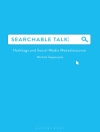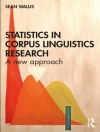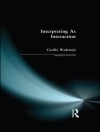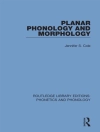This Handbook offers a comprehensive and engaging overview of contemporary issues in Literary Translation research through in-depth investigations of actual case studies of particular works, authors or translators. Leading researchers from across the globe discuss best practice, problems, and possibilities in the translation of poetry, novels, memoir and theatre.
Divided into three sections, these illuminating analyses also address broad themes including translation style, the author-translator-reader relationship, and relationships between national identity and literary translation. The case studies are drawn from languages and language varieties, such as Catalan, Chinese, Dutch, English, French, German, Hebrew, Italian, Japanese, Nigerian English, Russian, Spanish, Scottish English and Turkish. The editors provide thorough introductory and concluding chapters, which highlight the value of case study research, and explore in detail the importance ofthe theory-practice link.
Covering a wide range of topics, perspectives, methods, languages and geographies, this handbook will provide a valuable resource for researchers not only in Translation Studies, but also in the related fields of Linguistics, Languages and Cultural Studies, Stylistics, Comparative Literature or Literary Studies.
विषयसूची
Introduction.- Section I Literary Translation and Style.- Translating the Poetry of Nelly Sachs.- The Poetry of Gerrit Achterberg: A Translation Problem?.-Stylistic Choices in the Japanese Translations of Crime and Punishment.-Genre in Translation: Reframing Patagonia Express.- A De-feminized Woman in Conan Doyle’s The Yellow Face.- Translating Voices in Crime Fiction: The Case of the French.- Translation of Brookmyre’s Quite Ugly One Morning.- The Case of Natascha Wodin’s Autobiographical Novels: A Corpus-Stylistics
Approach.- Hysteresis of Translatorial Habitus: A Case Study of Aziz Üstel’s Turkish Translation of A Clockwork Orange.- Transcreating Memes: Translating Chinese Concrete Poetry
Section II The Author-Translator-Reader Relationship.- Performing the Literal: Translating Chekhov’s Seagull for the Stage.- The Restored New Testament of Willis Barnstone.- Angst and Repetition in Danish Literature and Its Translation:.- From Kierkegaard to Kristensen and Høeg.- ‘The Isle Is Full of Noises’: Italian Voices in Strehler’s La Tempesta .- Ibsen for the Twenty-First Century.- Biography as Network-Building: James S. Holmes and Dutch-
English Poetry Translation.- Questioning Authority and Authenticity: The Creative Translations of Josephine Balmer.- Absence and Presence: Translators and Prefaces
“Out of the Marvellous” as I Have Known It: Translating Heaney’s Poetry.- Section III Literary Translation and Identity.- Sunjata in English: Paratexts, Authorship, and the Postcolonial Exotic.- Border Writing in Translation: The Spanish Translations of Woman
Hollering Creek by the Chicana Writer Sandra Cisneros.- Cheating on Murasaki Shikibu: (In)fidelity, Politics, and the Quest
for an Authoritative Post-war Genji Translation.- Post-1945 Austrian Literature in Translation: Ingeborg Bachmann in English.- Divorce Already?! Should Israelis Read the Tanakh (Bible)in Translation?.- Translation, World Literature, Postcolonial Identity.- Translators of Catalan as Activists During the Franco Dictatorship.- Conclusion
लेखक के बारे में
Jean Boase-Beier is Emeritus Professor of Literature and Translation at the University of East Anglia, UK. She writes on translation theory and the translation of poetry, and is a translator from German.
Lina Fisher has taught Literary Translation at the University of East Anglia and Translation Studies at the University of Hull, UK. Her research interest is the intersection of gender, style and translation.
Hiroko Furukawa is Associate Professor of Literary Translation at Tohoku Gakuin University, Japan. Her main research interests are Literary Translation, and language and gender ideology.












